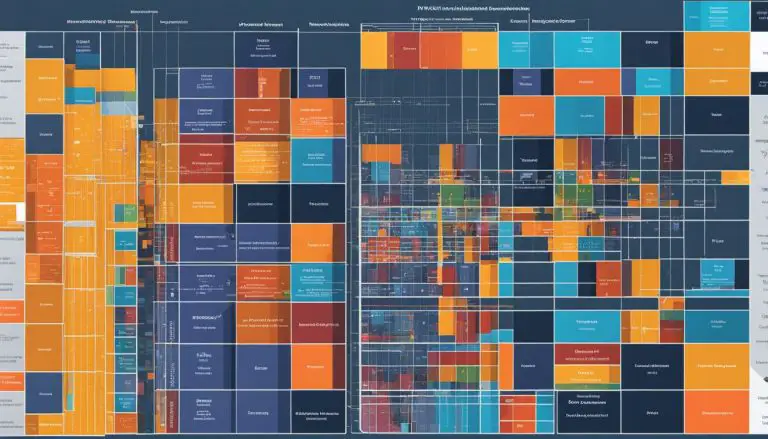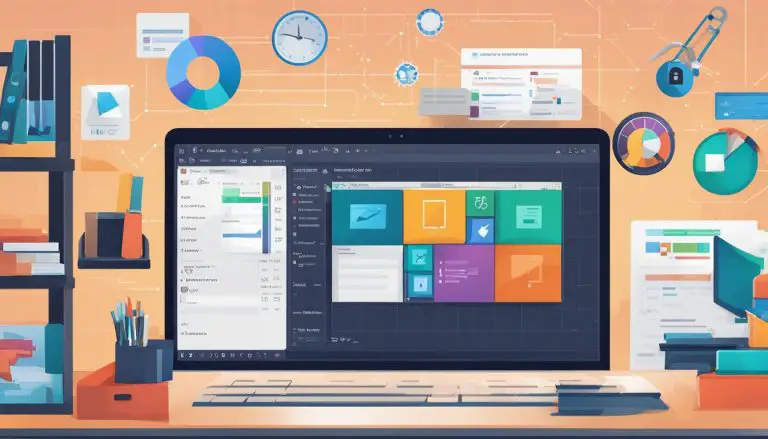Uncovering the Mystery: What is Slackware Explained Simply
Slackware is a Linux-based operating system that has been around for decades. It is known for its stability, simplicity, and customization options, making it a favorite among Linux enthusiasts. But what exactly is Slackware and what sets it apart from other distributions?
Slackware Linux, often referred to as Slackware OS or simply Slackware, is the oldest continuing GNU/Linux distribution. It was first released in 1993 and has since gained a reputation for its reliability and adherence to the Unix philosophy.
Unlike many other Linux distributions, Slackware does not include Systemd, making it popular among users who prefer alternative init systems. It offers a choice to install a boot loader or not during the installation process, giving users more flexibility.
The default desktop environment in Slackware is XFCE, which provides a lightweight and efficient user interface. The distribution includes a wide range of software packages, giving users the tools they need for both desktop and server environments.
Developed by different individuals or teams, each with their own ideas about software licensing, most components of Slackware are licensed under the GNU General Public License (GPL) or the BSD license.
Key Takeaways:
- Slackware is a Linux-based operating system known for its stability and simplicity.
- It is the oldest continuing GNU/Linux distribution and does not include Systemd.
- Slackware offers a choice to install a boot loader and has XFCE as the default desktop environment.
- Most components of Slackware are licensed under the GNU General Public License (GPL) or the BSD license.
- Slackware provides a wide range of software packages for both desktop and server environments.
History of Slackware
Slackware has a long and rich history in the Linux community. It was first released in 1993 by Patrick Volkerding and is still actively maintained and developed today. Slackware is considered the oldest continuing GNU/Linux distribution. Over the years, it has gained a reputation for its stability, simplicity, and adherence to the Unix philosophy. Unlike many modern distributions, Slackware has remained true to its original design principles, making it a favorite among Linux veterans.
Detailed Notes: History of Slackware
Slackware was created in 1993 by Patrick Volkerding and is known for being the oldest continuing GNU/Linux distribution. It has a long and rich history in the Linux community and has gained a reputation for its stability, simplicity, and adherence to the Unix philosophy. Slackware has remained true to its original design principles, making it a favorite among Linux veterans.
Slackware’s history spans over many years, and it has played a significant role in the development and evolution of the Linux ecosystem. Despite the emergence of newer and more user-friendly distributions, Slackware has maintained a dedicated user base who appreciate its traditional approach and emphasis on simplicity and stability.
Slackware’s history is a testament to the longevity and resilience of the Linux community. Its continued development and popularity showcase the enduring appeal of a distribution that stays true to its roots.
Slackware’s history is a testament to the longevity and resilience of the Linux community. Its continued development and popularity showcase the enduring appeal of a distribution that stays true to its roots.
The Features of Slackware
Slackware offers a number of unique features that set it apart from other Linux distributions. One of its notable features is its simple and straightforward package management system. Slackware uses the traditional “tarball” format for package installation, allowing users to easily manage and install software packages.
Another feature that makes Slackware stand out is its high degree of customization. Users have the freedom to configure their systems according to their specific needs, making it a versatile and flexible choice for Linux enthusiasts. Whether you’re a developer, a server administrator, or a desktop user, Slackware offers a wide range of customization options to suit your requirements.
Slackware also includes a comprehensive set of software packages. From desktop environments to development tools and server software, Slackware provides a robust selection of software to meet various needs. This ensures that users have access to the tools they require, regardless of their area of expertise or interest.
Lastly, Slackware places a strong emphasis on stability and reliability. It is known for its rock-solid performance and adherence to the Unix philosophy. This makes it an excellent choice for both desktop and server environments, where stability is of utmost importance. With its focus on reliability, Slackware offers a secure and dependable operating system for users.
Table: Slackware Features
| Feature | Description |
|---|---|
| Simple Package Management | Slackware uses the traditional “tarball” format for package installation, providing a straightforward and efficient way to manage software packages. |
| High Degree of Customization | Users can tailor their Slackware systems to their specific needs, offering flexibility and versatility for various use cases. |
| Comprehensive Software Packages | Slackware includes a wide range of software packages, ensuring users have access to the tools they require for development, server administration, and more. |
| Emphasis on Stability and Reliability | Slackware is known for its stability and adherence to the Unix philosophy, making it a dependable choice for both desktop and server environments. |
With these features, Slackware offers a unique and powerful Linux distribution that caters to the needs of a diverse user base. Whether you prefer simplicity, customization, or stability, Slackware has something to offer for everyone.
Advantages of Slackware
Slackware offers several advantages that make it a compelling choice for users seeking a stable and customizable operating system. Here are some key advantages:
- Stability and Reliability: Slackware is renowned for its stability and reliability, making it a trusted option for both desktop and server environments. The distribution’s emphasis on simplicity and adherence to Unix principles ensures a solid and dependable operating system.
- Lightweight and Efficient: Slackware is designed to be lightweight, allowing it to run smoothly even on older hardware. Its minimalist approach ensures optimal performance without unnecessary resource consumption, making it an ideal choice for users seeking efficiency.
- Customization and Control: Slackware provides a high level of control and customization, allowing users to tailor their systems to their specific needs. The distribution offers a range of configurations and package choices, empowering users to create a personalized computing environment.
- Active Community Support: Slackware boasts a strong and active community of users who are passionate about the distribution. This vibrant community provides valuable assistance and support, making it easier for users to troubleshoot issues and find solutions to their problems.

Overall, Slackware’s stability, lightweight nature, customization options, and community support make it a compelling choice for those seeking a reliable and personalized Linux distribution. While it may require a slightly steeper learning curve compared to some other distributions, the benefits of Slackware outweigh the initial challenges for those who value control and efficiency in their computing experience.
Disadvantages of Slackware
While Slackware offers many benefits, it is important to consider its potential drawbacks. One of the main disadvantages of Slackware is its steep learning curve. The distribution does not provide as much hand-holding or automated configuration as some other Linux distributions, which means that new users may find it challenging to get started. Additionally, Slackware may not have the same level of hardware and software compatibility as more popular distributions, which could be a limitation for users who require specialized or niche applications.
However, it’s worth noting that Slackware’s minimalist approach and emphasis on customization also contribute to its disadvantages. The lack of automated tools and graphical interfaces means that users need to have a deeper understanding of the underlying system and be comfortable working with the command line. This can be a barrier for those who prefer a more user-friendly experience or who are less experienced with Linux. It’s also worth considering that Slackware may have a smaller user base compared to other distributions, which can impact the availability of third-party software and support resources.
Despite these disadvantages, many users find that the benefits of using Slackware outweigh the challenges. The distribution’s stability, reliability, and high level of control make it an attractive choice for those who value a more hands-on approach and have specific customization needs. With the support of its active community and ample documentation, Slackware can be a rewarding choice for Linux enthusiasts who are willing to invest the time and effort to learn and master its unique features.
| Disadvantage | Description |
|---|---|
| Steep Learning Curve | Slackware requires users to have a deeper understanding of the underlying system and be comfortable working with the command line, which can be challenging for new users. |
| Compatibility Limitations | Slackware may not have the same level of hardware and software compatibility as more popular distributions, potentially limiting its usability for users with specific requirements. |
| Minimalist Approach | The lack of automated tools and graphical interfaces in Slackware may be less user-friendly for those who prefer a more intuitive experience. |
| Smaller User Base | Slackware’s smaller user base may impact the availability of third-party software and support resources compared to more widely used distributions. |
Slackware vs Other Distributions
When comparing Slackware to other Linux distributions, one of the key differences lies in its design philosophy and approach. While many distributions prioritize user-friendliness and provide extensive graphical tools, Slackware takes a more minimalist and hands-on approach. It requires users to have a deeper understanding of the underlying system and be comfortable working with the command line. This sets it apart from more user-friendly distributions like Ubuntu or Fedora.
One of the advantages of Slackware’s approach is that it allows for a high level of customization and control. Users have the ability to fine-tune their systems to their specific requirements, making it an appealing choice for those who prefer a more tailored experience. However, this level of customization does come with a trade-off, as it can result in a steeper learning curve for new users.
Another aspect where Slackware differs from other distributions is its emphasis on stability and reliability. By staying true to its original design principles, Slackware has gained a reputation for being a rock-solid operating system. This can be particularly advantageous for those working in critical or specialized environments where system stability is crucial.
| Slackware | Other Distributions |
|---|---|
| Minimalist and hands-on approach | More user-friendly and graphical tools |
| High level of customization and control | Often offer pre-configured options |
| Emphasis on stability and reliability | Focus on the latest features and cutting-edge technologies |
| Requires a deeper understanding of the system | Designed for ease of use and accessibility |
Slackware’s minimalistic approach and focus on stability may not suit everyone’s needs, especially those who prioritize ease of use and access to the latest features. However, for experienced Linux users who value customization and control, Slackware can provide a solid foundation for building a tailored operating system.
In the end, the choice between Slackware and other distributions ultimately comes down to personal preference and the specific requirements of the user. While Slackware may require a bit more initial investment in terms of learning and configuration, it offers a unique and rewarding experience for those who are willing to embrace its philosophy.
Installing Slackware
Installing Slackware is a relatively straightforward process that allows users to customize their system and choose the specific packages they want to install. The distribution provides different installation options, including the ability to select a boot loader or not. During the installation, users can also choose from various desktop environments, with XFCE being the default.
Once you have booted from the Slackware installation media, you will be guided through a series of steps to set up your system. These steps include selecting your preferred language, keyboard layout, and timezone. You will also be prompted to partition your hard drive and select the installation source.
After the initial setup, you will have the opportunity to customize your system further. Slackware offers a wide range of software packages, and you can choose which ones to install during this stage. This allows you to create a tailored system that meets your specific needs and preferences.
Installation Process Overview
To help you understand the installation process in more detail, below is an overview of the steps involved:
- Boot from the Slackware installation media
- Select your language, keyboard layout, and timezone
- Partition your hard drive
- Select the installation source
- Customize your system by selecting the software packages you want to install
- Set up your user account and password
- Choose whether to install a boot loader
- Complete the installation process
Once the installation is complete, you will have a fully functional Slackware system that you can start using. It is important to note that while the installation process may differ slightly depending on your hardware and specific requirements, following these general steps will help you get started with Slackware.

Using Slackware
When it comes to using Slackware, it’s important to note that the distribution primarily relies on a command-line interface for system interaction. This means that users should have a solid understanding of the Linux command line and a basic knowledge of how Linux operates. While this might seem intimidating to some, it provides a level of control and customization that is highly valued by more experienced users.
Fortunately, Slackware includes comprehensive documentation and resources to help users navigate and familiarize themselves with the system. The distribution’s official website offers detailed guides, FAQs, and forums where users can find answers to their questions and troubleshoot any issues that may arise.
Moreover, the active Slackware community is known for its welcoming and supportive nature. Engaging with the community through online forums, mailing lists, and chat channels provides an opportunity to connect with other Slackware enthusiasts, exchange knowledge, and seek assistance. Whether you’re a beginner or a seasoned user, the Slackware community is there to help you make the most of your Slackware experience.
| Key Points | Summary |
|---|---|
| 1. Command-line Interface | Slackware primarily uses a command-line interface for system interaction, requiring users to have a solid understanding of the Linux command line. |
| 2. Comprehensive Documentation | Slackware provides detailed documentation and resources to help users navigate and familiarize themselves with the system. |
| 3. Supportive Community | The active Slackware community offers support through forums, mailing lists, and chat channels, providing assistance and fostering knowledge exchange. |
Getting Started with Slackware
If you’re new to Slackware, it’s advisable to start by exploring the official documentation and online resources. This will help you familiarize yourself with the distribution’s unique features and provide insights into how to make the most of your Slackware experience.
Additionally, it’s beneficial to spend some time experimenting with Slackware in a non-production environment, such as a virtual machine or spare hardware. This allows you to become comfortable with the distribution’s command-line interface and gain confidence in managing your system.
Remember, using Slackware is a learning process that rewards curiosity and hands-on experience. Embrace the challenge, seek guidance from the community, and enjoy the freedom and control that Slackware offers.
Slackware Updates and Security
Keeping your Slackware system up to date is crucial for maintaining its security and stability. The Slackware community and development team are actively involved in providing regular updates to address any vulnerabilities or bugs that may arise. These updates are delivered through the distribution’s package management system, making it convenient for users to install the latest security patches and improvements.
It is recommended to regularly check for updates and apply them promptly to ensure that your Slackware system remains protected against potential threats. By staying up to date, you can benefit from the latest security measures and bug fixes, enhancing the overall performance and reliability of your system.
Additionally, Slackware offers various security features that can further safeguard your system. These include secure package signing, which ensures that the software you install is authentic and has not been tampered with. Slackware also provides tools and resources to help you monitor and manage security settings, allowing you to customize your system’s security according to your needs and preferences.
Slackware Community
The Slackware community is a vibrant and passionate group of users who share a common interest in this venerable Linux distribution. Whether you’re a seasoned Slackware user or a newcomer, you’ll find a welcoming and supportive community ready to help you navigate the ins and outs of this unique operating system.
One of the hallmarks of the Slackware community is its dedication to simplicity and reliability. Users value the stability and control that Slackware offers, and they are eager to share their knowledge and experiences with others. Online forums, mailing lists, and chat channels provide platforms for users to connect, ask questions, and contribute to the ongoing development of Slackware.
Being part of the Slackware community not only helps you troubleshoot any issues you may encounter, but it also allows you to exchange ideas, learn new tips and tricks, and explore the vast possibilities of this powerful distribution. Whether you’re seeking help, offering advice, or simply engaging in friendly discussions, the Slackware community is a valuable resource for all users.
Slackware Community Resources
- SlackBuilds: A community-driven repository of build scripts for additional software packages.
- Slackware Documentation Project: A comprehensive collection of guides and tutorials to help users get the most out of Slackware.
- Slackware-Forum.de: A German-language forum where users can exchange ideas and seek assistance.
- #slackware on freenode: An IRC channel where users can chat in real-time and get instant help and support.
Why Join the Slackware Community?
Being part of the Slackware community is an opportunity to connect with like-minded individuals who share your passion for this legendary Linux distribution. Whether you’re a hobbyist, a professional, or simply curious about exploring new technologies, the Slackware community welcomes you with open arms. So dive in, explore, and become an active member of this vibrant community!
Conclusion
In conclusion, Slackware is a versatile and reliable Linux distribution that caters to users seeking a stable and customizable operating system. With its rich history as the oldest continuing GNU/Linux distribution, Slackware has garnered a loyal following of enthusiasts who value its simplicity and adherence to Unix principles.
Slackware offers a range of features that set it apart from other distributions. Its straightforward package management system, emphasis on stability and reliability, and high degree of customization make it a popular choice for both desktop and server environments. The distribution may have a learning curve for new users, but its active community and extensive documentation provide ample assistance.
While Slackware may not be as user-friendly as some other Linux distributions, it rewards users with a unique and rewarding experience. Its lightweight design and compatibility with older hardware make it an attractive option for those seeking efficiency. Ultimately, the choice between Slackware and other distributions comes down to personal preference and the specific needs of the user.
Whether you are a seasoned Linux user or a newcomer to open-source software, Slackware is definitely worth considering. With its long-standing reputation for stability, customization, and a dedicated community, Slackware remains a reliable choice for those seeking a robust and adaptable operating system.
FAQ
What is Slackware?
Slackware is a Unix-like operating system and one of the oldest continuing GNU/Linux distributions.
Does Slackware include Systemd?
No, Slackware does not include Systemd, which makes it popular among users who prefer alternative init systems.
What is the default desktop environment in Slackware?
The default desktop environment in Slackware is XFCE.
What is the package management system in Slackware?
Slackware uses a simple and straightforward package management system that uses the “tarball” format for package installation.
Is Slackware customizable?
Yes, Slackware provides a high degree of customization, allowing users to configure their systems to their specific needs.
Is Slackware suitable for both desktop and server environments?
Yes, Slackware emphasizes stability and reliability, making it an excellent choice for both desktop and server environments.
What are the advantages of using Slackware?
Some advantages of Slackware include its stability, lightweight nature, high level of control and customization, and a strong and active community for support.
What are the potential drawbacks of Slackware?
Some potential drawbacks of Slackware include its steep learning curve, potential compatibility issues with specialized or niche applications, and a more hands-on approach compared to user-friendly distributions.
How do I install Slackware?
Slackware offers a straightforward installation process with options to choose a boot loader and desktop environment. Users can also customize their systems and select specific packages during the installation.
How do I use Slackware?
Slackware primarily uses a command-line interface, so users should be comfortable working with the Linux command line. A comprehensive set of documentation and an active community are available for support and troubleshooting.
How do I update Slackware?
Slackware provides updates through its package management system, allowing users to easily install the latest security patches and bug fixes.
Is there a community for Slackware users?
Yes, the Slackware community is known for being welcoming and helpful. There are various online forums, mailing lists, and chat channels where users can connect, seek assistance, and participate in the development of Slackware.
Source Links
- About the Author
- Latest Posts
Mark is a senior content editor at Text-Center.com and has more than 20 years of experience with linux and windows operating systems. He also writes for Biteno.com






